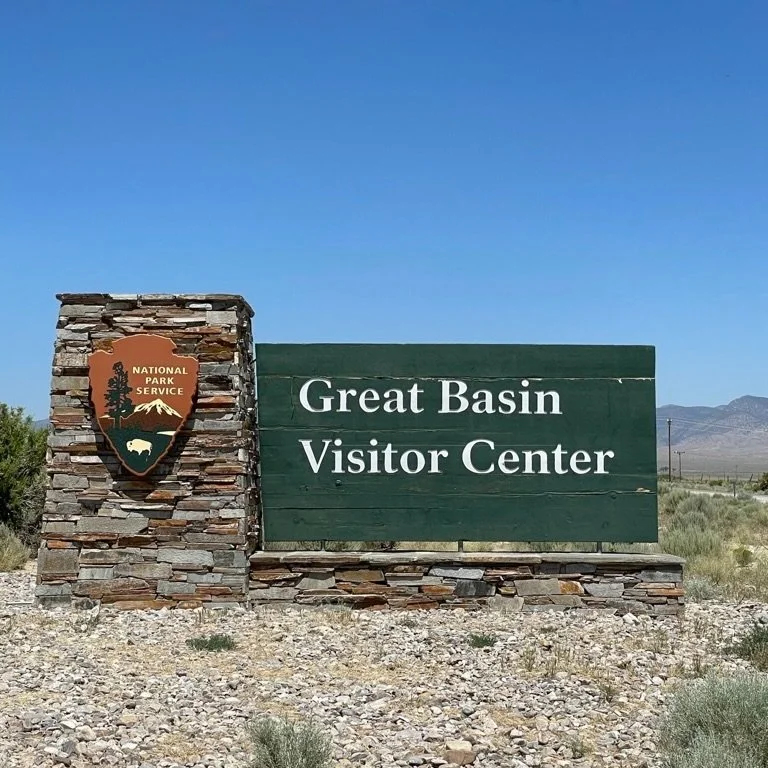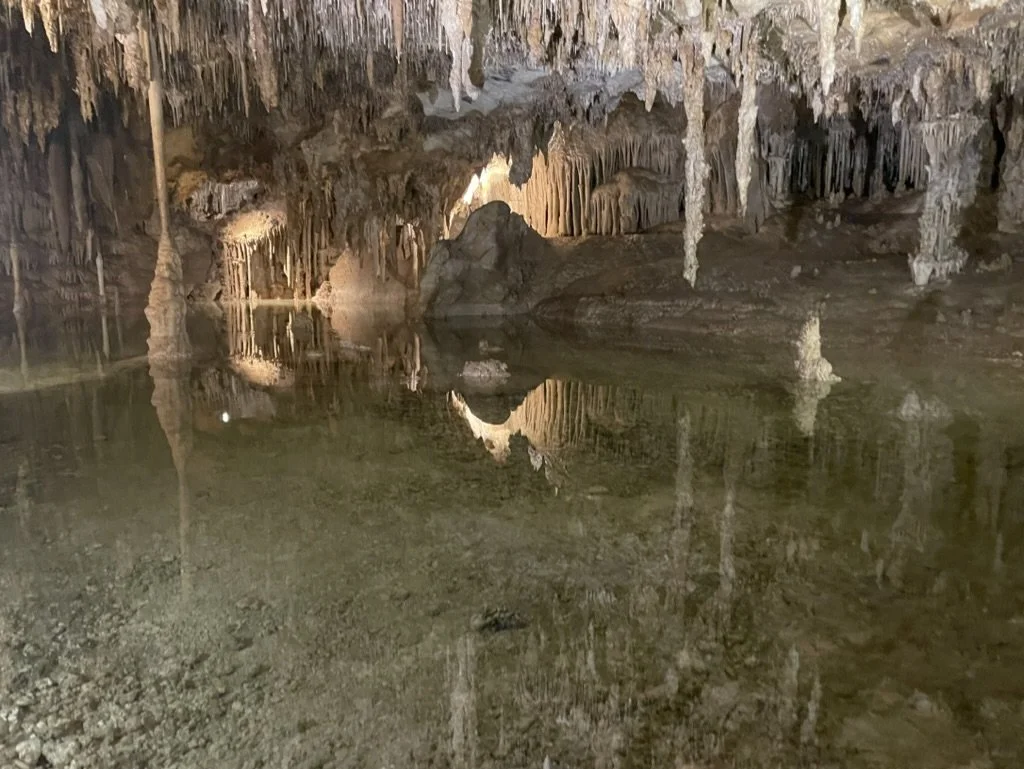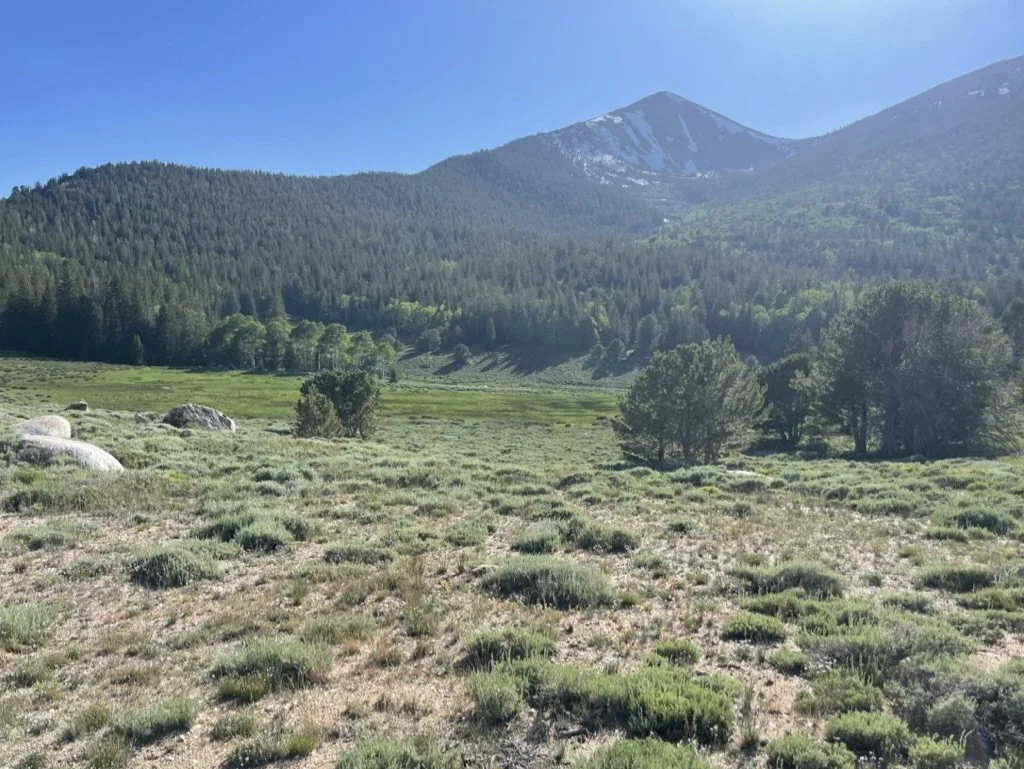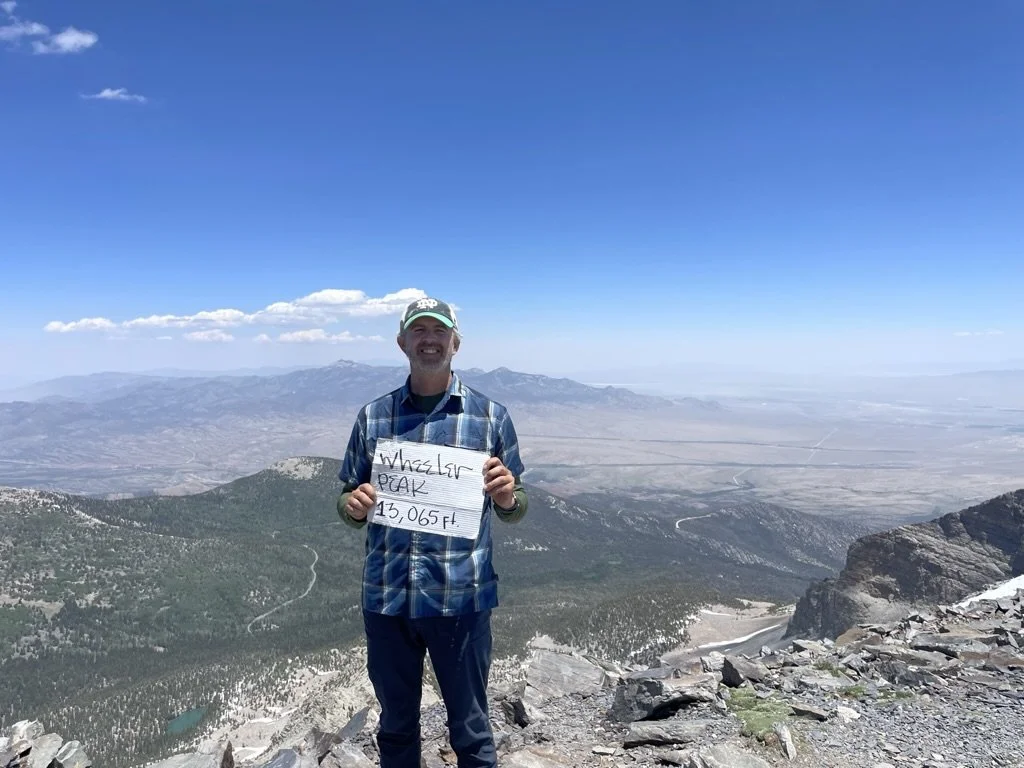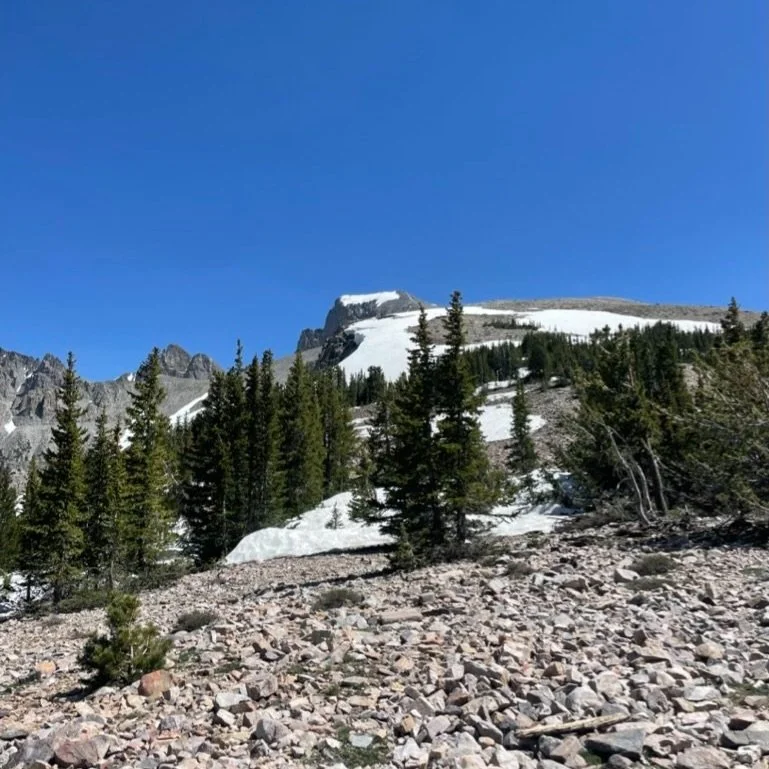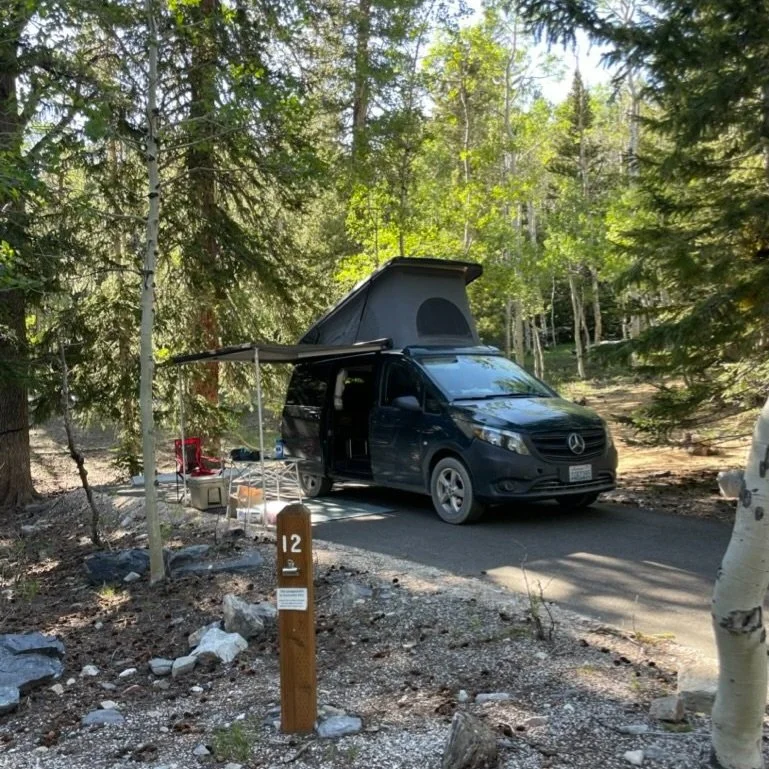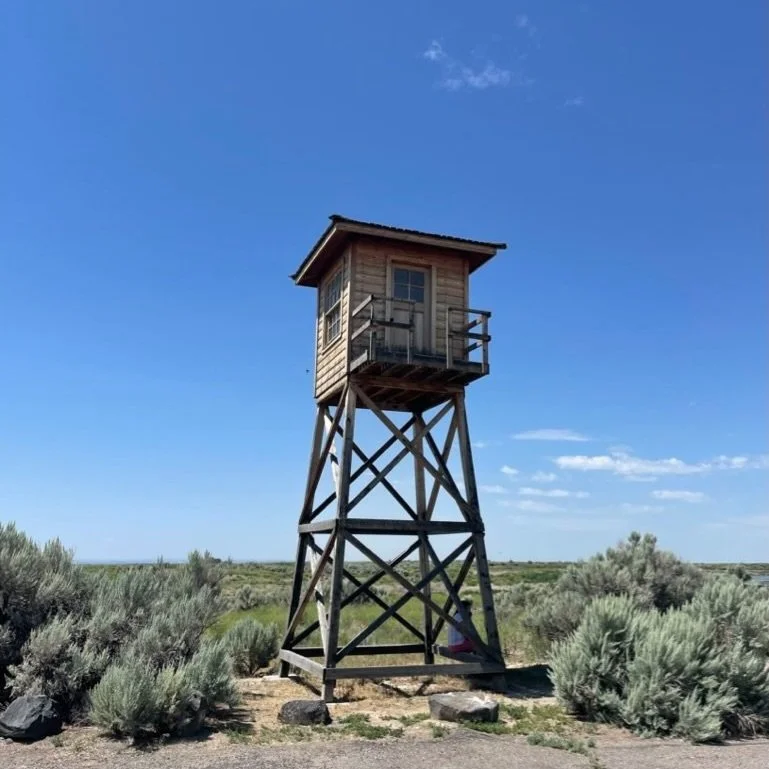Great Basin National Park
When people ask: What’s your favorite National Park? our standard response is something like “All of them,” “How can you pick just one,” or “I can give you six, but they might change tomorrow.” When people ask: What’s the most underrated National Park, the answer is Great Basin — hands down. There are others that are surely underrated, but this one has so much, yet is visited by and known to so few. For those of us who get a bit more of the Park to ourselves, so be it.
Great Basin National Park sites in eastern Nevada just across the Utah border. While some Parks are know for one geographic or natural feature, Great Basin has numerous reasons for this land to be set a side. In this remote part of the West, visitors can tour a limestone cave, climb to a 13,000-foot summit, stand next to 4,000 year old trees, and experience some of the best stargazing anywhere. Great Basin was made a National Park in 1986, but the Lehman Cave section has been set aside as a National Monument since 1922.
The Park’s name comes from a much larger feature: the Great Basin, which is a vast geographic region covering much of Nevada and parts of surrounding states. The Great Basin is defined by its hydrology, in that it's an area where water does not flow to the ocean. Instead, rain and snowmelt either evaporate, seep into the ground, or collect in salt flats and playas. This internal drainage system makes the Great Basin one of the driest regions in North America, yet it supports surprising biodiversity and stark beauty.
Great Basin was not on the list for parks to visit on this trip. The route we took over three summers went from Denver heading North and then West to Seattle; from Settle South through California; and then East through Utah, Arizona, and Colorado. So, we found ourselves making a near complete loop back to Colorado. Of course this was intentional, as it mimicked the 1920 National Park-to-Park Highway Tour. But right in the geographic center of all the Parks we visited was a gap — Great Basin.
So, as the month evolved it began to seem like a good idea to add a ninth Park to our third summer’s plans. By cutting a little time off of Mesa Verde, we arrived at Black Canyon of the Gunnison earlier. The permit acquisition for the inner-canyon hike at Black Canyon allowed for an early departure. And looking ahead, it was possible to drive back to Seattle with only two overnight stops, instead of three. We ended up skipping Dinosaur National Monument — when we get back to that one, we’ll let you know if it was a good decision or bad. But we have no regrets about choosing to hit up Great Basin.
We began at the visitor center in Baker, Nevada, which is still well outside the Park. Driving to the west for about five miles and climing 1,500 feet, we finally entered the Park and checked into the Lehman Caves Visitor Center.
On this first day, we reserved a cave tour and joined a small group led by a park ranger through a series of rooms and passages in a limestone cave that recently celebrated it’s 100th anniversary as part of the public land system. It’s not the most amazing cave that NPS protects, but it’s well worth the time and the tour, and it’s the main attraction for many visitors.
After arriving at Grey Cliffs campground, we headed out on the nearby Baker Creek-Timber Creek Loop. Over 6.5 miles, we enjoyed a phenomenal Alpine hike with water flowing everywhere. There were precisely zero other hikers on this hike. It boasted solitude and beauty, and if you close your eyes and re-open them, you could be convince that you’re in a Swiss meadow.
That evening, the plan was to attend the ranger-led astronomy talk. We’ve been to quite a few of these Dark Skies of talks at different Parks, but Great Basin certainly has the finest facility featuring multiple rows of circular cement benches with inlayed red lights for safety and night vision preservation. For a park that seems relatively empty, the Dark Skies program was not. There were over 150 people in attendance, multiple rangers, three telescopes, and perfectly clear skies. The stargazing at Great Basin is a 10/10, and the ranger-led program is highly recommended.
Day two: conquer Wheeler Peak. At the very top of Great Basin National Park, Wheeler Peak looks down on the alpine meadows, Lehman cave, and all the visitors. At 13,065 feet above sea level, Wheeler Peak is the tallest mountain peak completely in Nevada. (Boundary Peak — about 80 feet higher — is the highest point in the state, but the mountain sits on the California border.) Across nine miles and 3000 feet of elevation gain, the hike got into truly thin air. Rangers had warned that the summit was snowed in and inaccessible, so the plan was to turn back if anything became dangerous. Hiking poles were certainly a necessity, but the dozen of us braved the lack of oxygen and the waist-deep snow were greeted with amazingly rewarding views and a grand sense of accomplishment.
Note to families: Wheeler Peak was an adult-only hike for us. The girls could probably have handled much of it, but the limited oxygen at altitude would have likely had us turning back around half way through the ascent. We don’t recommend Wheeler Peak for kids or teens unless the teens are very experienced hikers.
The campsite that night was supposed to be Wheeler Peak campground — not far from the trailhead. But upon arrival that morning the campground was closed by a locked gate. Luckily, when returning (dead tired) after the summit push, the campground was open. Turns out that this was the first day of the season for this campground. And what an absolutely perfect campground this was. Quiet, cold, peaceful, and recently updated.
On day three, an early wake-up was ideal for the Alpine Loop and Bristle Cone Trail. The Alpine Loop departs from the Wheeler Peak campground and has a series of options to loop around some beautiful lakes and hundreds of branches of steams and run-off. For any hikers who can’t handle the mountain summit, Alpine Loop is a totally satisfactory substitute, and for those who did summit, you still shouldn’t miss this loop.
The Bristlecone Trail was supposed to be closed or partially closed. Perhaps we missed the signs, because we made it to the curated loop of bristlecones. These trees — some of which are more than 4,000 years old — are not to be missed. They are perhaps the most impressive thing in an incredibly impressive Park.
It’s hard to imagine that one Park could give more in just 2.5 days. Great Basin quickly became a favorite, a Park we’d love to visit again, and the distinction of most underrated Park we’ve ever been to.
Our trip back to Seattle was a two-night trip with the middle day dedicated to Minidoka National Historic Site, an WWII-era Japanese concentration camp in Idaho, near Twin Falls. This was an apt tribute to the tragic injustice committed against American citizens — adults and children — purely based on their race, coupled with irrational fear and small-mindedness. It’s a reminder that we must do everything we can to never let something like this happen again in this country.
The next day, we returned our Peace Van to Seattle and wrapped the third leg of the Park to Park Tour — proud of what we’d done, sad to be leaving the road, and excited for what comes next.

